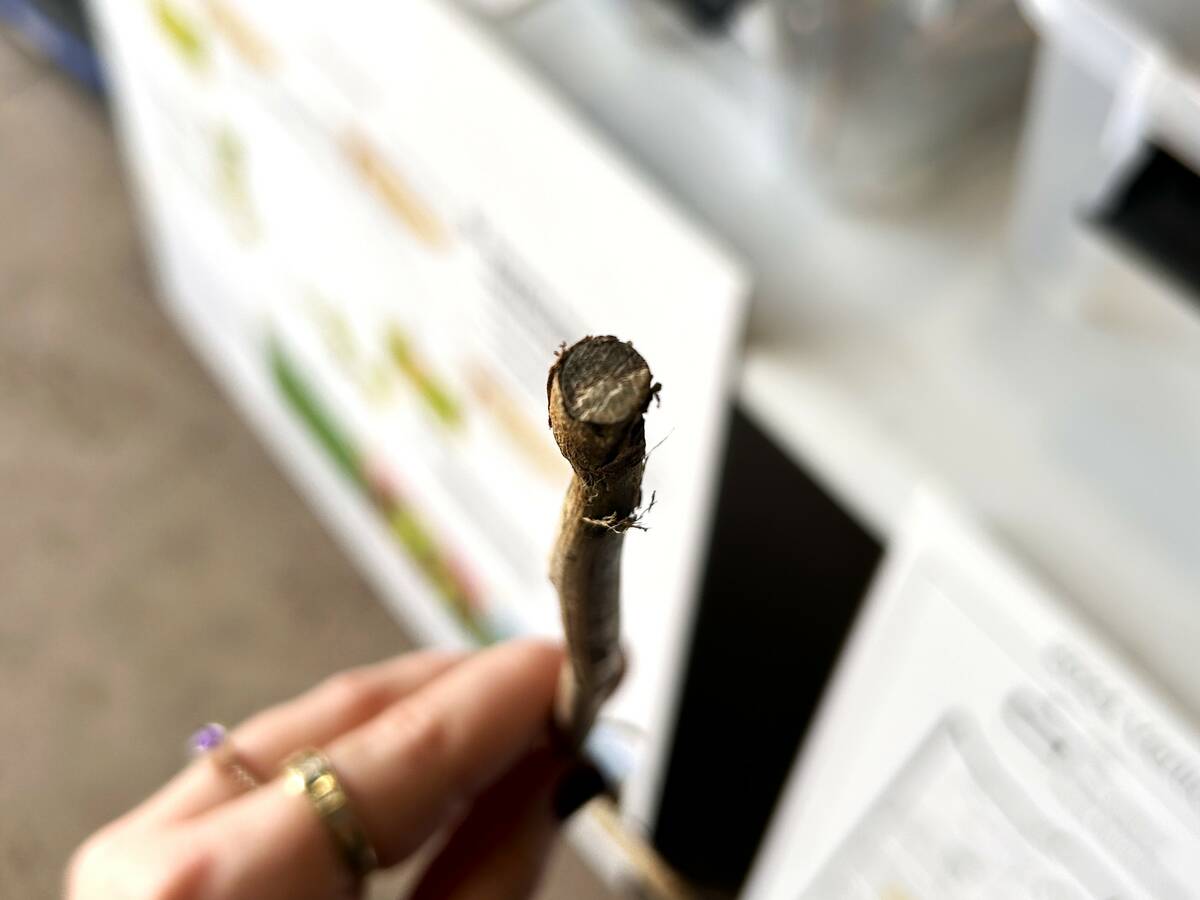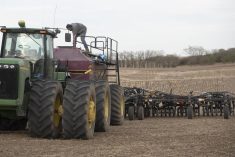Peas are a powerhouse. Not only do they sport a low carbon footprint and contain a high amount of protein, but they come with their own nitrogen.
So why aren’t more acres planted?
Why it matters: Peas have seen a resurgence in Manitoba with the entry of new processors in recent years.
The biggest reason is risk of root rot, which can infect the soil for years.
Read Also

Manitoba canola embattled by verticillium
Verticillium stripe pressure has been growing in Manitoba, and canola farmers still have precious few tools to protect their crop from the disease.
But what if root rot wasn’t a problem? That’s what a group of Prairie researchers intend to find out. They want to build a pea that’s root rot resistant and drought tolerant. The big picture goal is to encourage more producers to give peas a chance.
“Nitrous oxide from nitrogen fertilizers is a major greenhouse gas that is 300 times more potent than carbon dioxide at trapping heat,” wrote Marcus Samuel, a professor with the University of Calgary, in a news release.
“Peas belong to the legume family and require little external nitrogen, making them exceptionally climate-efficient. They really are the perfect crop for this research.”
Genomic research on peas has been missing in recent years, wrote Sateesh Kagale with the National Research Council of Canada.
The project teams the University of Calgary with the NRC as leaders of the four-year research effort.
“With fewer genomics resources invested in pea breeding, farmers are struggling with low yields caused by root rot and drought,” wrote Kagale. “This project has immense potential to significantly enhance pea genetic and genomic resources, laying the foundation for transformative varietal development.”
From a marketing perspective, the high price of meat in recent years is causing peas and other legumes to carve a niche in consumers’ protein consumption, said Samuel.
“The demand is going up like crazy. The demand for pea protein in the U.S. went up 64 per cent in the last five or six years.
“In a world where meat is expensive, consumers from all over the world are looking at peas to help meet their protein demands.”
From a climate standpoint, peas’ nitrogen-fixing benefits are more than even the most optimistic scientist would guess. According to the Pulse Canada website, just under nine million acres of pulses eliminate 3.6 million tonnes of carbon dioxide per year, the equivalent of 1.1 million passenger vehicles taken off the road annually.
“If we get double that equivalent under peas, it will be equal to the energy required to power every single household in Calgary,” said Samuel.
READ MORE: Can Manitoba support 300,000 acres of field peas?
In Manitoba, the popularity of peas has increased since the mid-2010s, bolstered by new markets created by processors such as Roquette.
In 2015, the Manitoba Agricultural Services Corp. reported just under 64,000 acres put to the crop. By 2020, that number had grown to 146,500 acres. This year, the corporation estimates Manitoba farmers planted just under 154,700 acres of field peas.
Project details
The project will start with researchers and partners getting their hands on pea germplasm from all over the globe.
“India might be growing a root rot resistant pea that we haven’t had access to before, so we are collecting about 2,000 germplasm [lines] from across the world,” he said.
The samples will be tested under field conditions for root rot resistance and drought tolerance. The genomes of the top 50 or 60 most promising lines will then be sequenced to see if they have particular traits that resist root rot or mitigate the effects of drought.
“And then we’ll actually move that trait into elite Canadian varieties,” said Samuel.
Gene editing will be used to remove the genetic material that causes root rot.
“Part of the project is to ‘knock out’ certain genes that cause root rot,” he said.
Don’t go looking for these improved varieties at the local seed supplier any time soon. Samuel doesn’t promise that lines will be available at the end of the project.
“At the end of four years we are confident that we will add some lines that are ready for breeding purposes. And hopefully we can see something in the field in eight to 10 years.”
The $7 million PeaCE (Pea Climate-Efficient) project is funded by Genome Canada as part of its $30 million, nine-project initiative to drive genomics research and innovation and help reduce the carbon footprint of Canada’s food production systems.
Aside from U of C and NRC, project partners include a who’s who of research and ag institutions across Western Canada, including – among others – AAFC Lacombe and the Western Grains Research Foundation.
A version of this article first appeared in the Sept. 18, 2023 issue of Alberta Farmer.
















